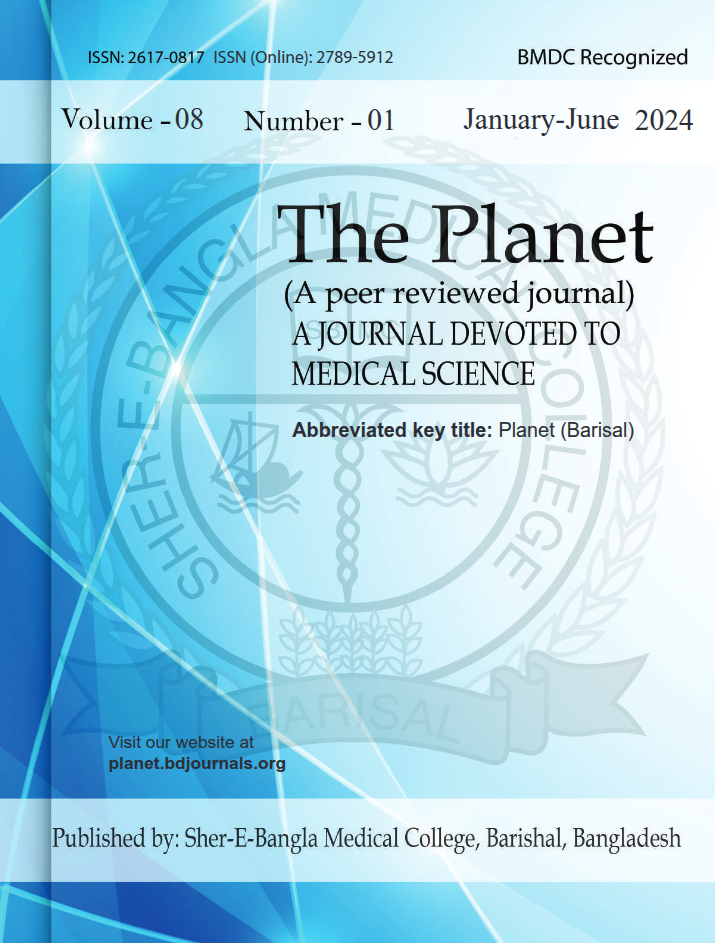Incidence and Risk Factors for Surgical Site Infection in Patients Undergoing Abdominal Surgeries at A Tertiary Care Centre
Published 28-12-2024
Keywords
- Risk factors,
- Surgical Site Infection (SSI),
- abdominal surgeries
Copyright (c) 2024 The Planet

This work is licensed under a Creative Commons Attribution 4.0 International License.
How to Cite
Abstract
Introduction: Surgical Site Infections (SSIs) are infections at incisional sites post-surgery, occurring within 30 days (or one year with prosthesis). SSIs, common hospital-acquired infections, have an estimated 2% incidence, potentially underestimated. In India, rates range from 6-39%, and in Bangladesh, 5.13-14.13%. Abdominal surgeries pose a higher risk due to bacterial concentration. Patient-related risk factors include age, malnutrition, diabetes, and immunosuppression. Aim of the study: This study aims to determine the rate of abdominal surgical site infections, identify associated risk factors, and assess the most common organisms encountered within a tertiary care center in Khulna. Methods & Materials: This one-year observational study at Khulna Medical College and Hospital focused on 132 individuals who underwent abdominal surgery between January 2022 to December 2023. Of these, 25 Surgical Site Infections (SSI) patients were analyzed. Inclusion criteria involved ages 15 to 60, both genders and SSIs from abdominal surgery. Result: The study examines surgical site infections (SSIs) in abdominal surgeries, presenting data on age, gender, obesity prevalence, wound types, surgery types (emergency vs. elective), and associated risk factors. Most patients were aged 46-60, with males comprising 58%. Clean-contaminated wounds had the highest SSI incidence. Emergency surgeries were more prone to SSIs (56%), with diabetes being a notable risk factor (44%). Anemia and hypoproteinemia exhibited equal incidence (28%), emphasizing their importance. Pseudomonas was the most common causative organism (40%), followed by Staphylococcus aureus (28%). The study underscores the significance of preoperative conditions and procedural factors in SSIs. Conclusion: The study investigates surgical site infections (SSIs) in abdominal surgeries at a Khulna tertiary care center, revealing a notable 18.94% SSI rate. Risk factors include age, gender, surgical wound type, emergency surgeries, comorbidities, hospitalization duration, drain placement, preoperative shaving, and extended surgical durations. Gram-negative bacteria like Pseudomonas and Escherichia coli are crucial considerations, emphasizing the importance of targeted interventions for infection prevention in abdominal surgery patients.


